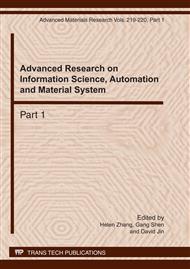p.713
p.718
p.722
p.727
p.732
p.736
p.742
p.746
p.750
Hierarchical Traffic Network Design under Emergency Logistics
Abstract:
In response to heavy demand for emergency logistics, an approach based on hierarchical network theory is introduced to solve the complexity of highway transportation network. It groups the traffic network into subprime networks and backbone networks on which a virtual local area network is designed accordingly to fulfill such function as information exchange and road condition renewal between forwarding stations. Compared with flat networks, the hierarchical traffic network design is in a good position to speed up routing, to conduct real-time monitoring and data-exchange, and consequently enhances efficiency of emergency logistics.
Info:
Periodical:
Pages:
732-735
Citation:
Online since:
March 2011
Authors:
Price:
Сopyright:
© 2011 Trans Tech Publications Ltd. All Rights Reserved
Share:
Citation:


